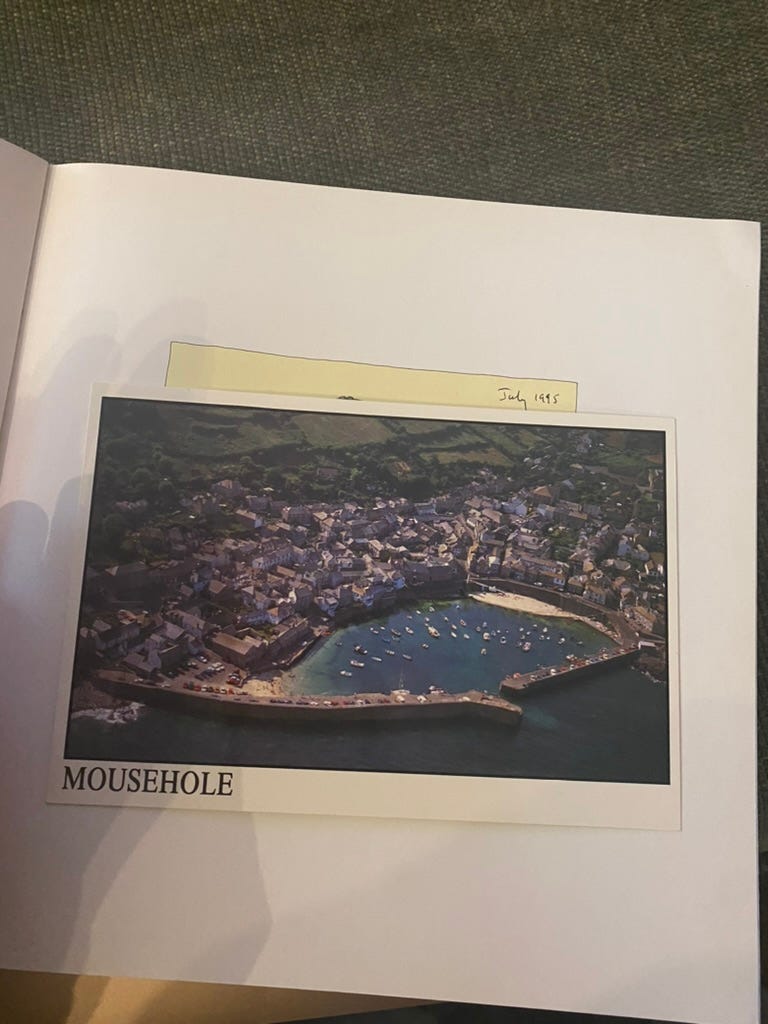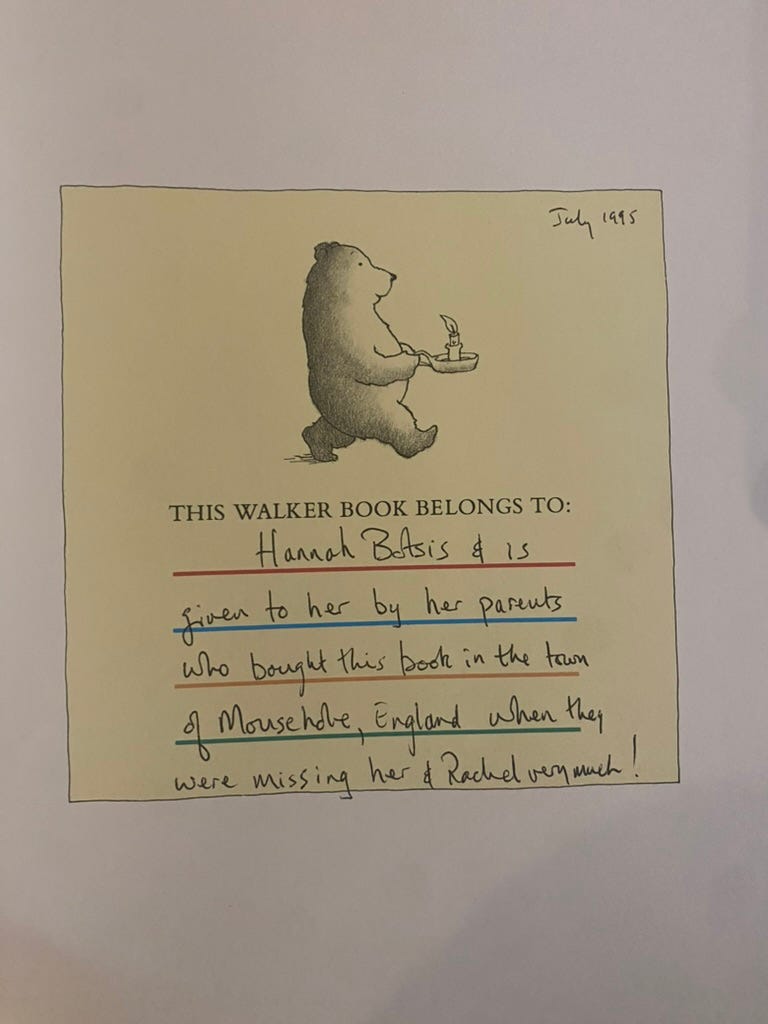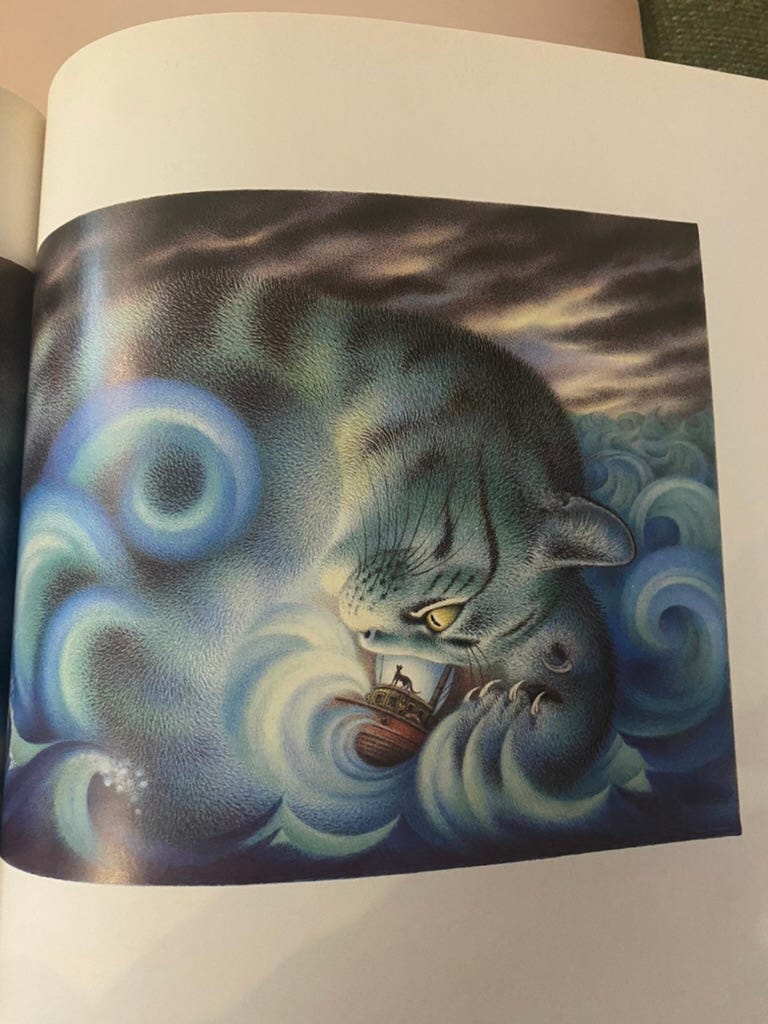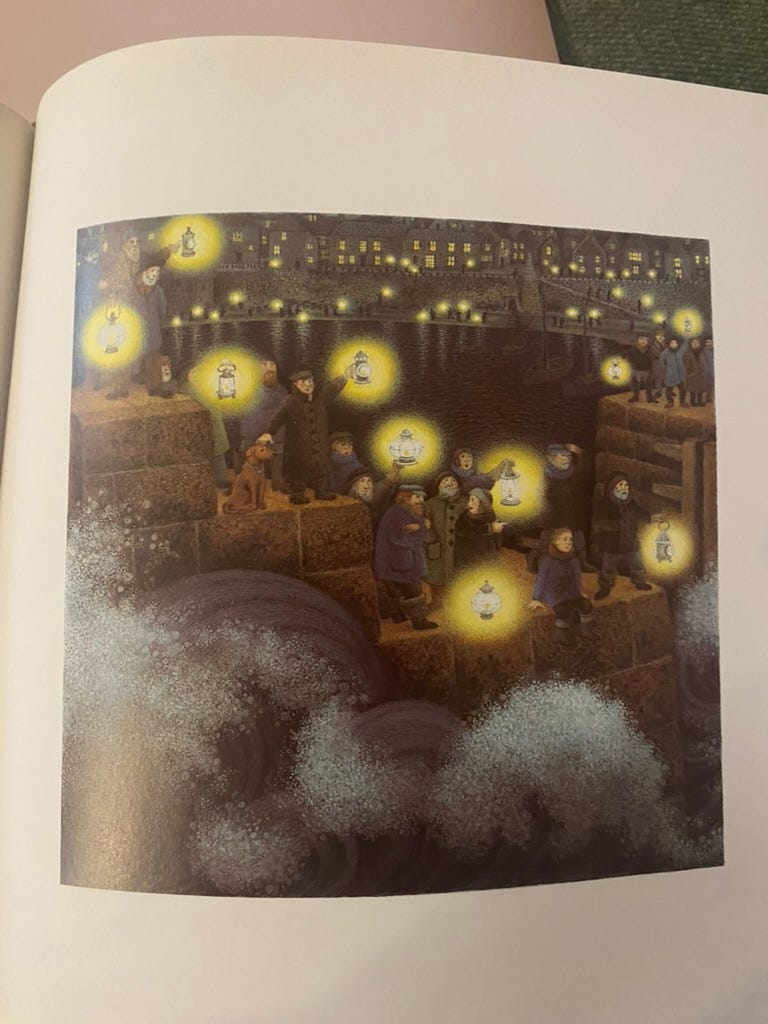In 1995, when I was 10 years old, my parents went on a trip. The details of it I can’t remember, but included in their itinerary was a tiny little fishing village called Mousehole, tucked into a quiet corner of Cornwall, about an hour’s walk from Penzance.
Here is postcard of the town with the following beguiling description on the back, “One of Cornwall’s older towns, Mousehole was raided by the Spanish in 1595. Since then, it has been ignored by history books, but, with Cornwall’s savage winter gales, drama is never far away”.
My parents bought me this book while there.
Those of you familiar with children’s books might immediately recognize Nicola Bayley’s distinctive illustrations. A family favourite of ours is The Patchwork Cat by William Mayne also illustrated by Nicola Bayley. ‘Good morning, good yawning.’
Oh the ubiquitous foxglove, I love you so. (My kids like the snail hidden beneath its leaves.)
Anyway, the Mousehole book captured my imagination and has been lodged in my mind ever since. The harbour with the very narrow inlet, the stormy seas, the brave fisherman and his cat. Maybe more than the story the illustrations conjured a world of dim but contoured greeny-blue light. Of coziness and stone and lamp light.
This is not the first time an obscure reference in a book has propelled me into the real world. Some years back reading Jeffrey Eugenides’ The Marriage Plot, there was a throwaway scene in which he described a Quaker meeting. The practice of silent worship intrigued me, so I looked up a chapter in Johannesburg and wouldn’t you know it, one met in the Wits Arts Museum in Braamfontein. So I went.
…
Discovering the real world with cuttings from my patchwork reading as a guide has provided me with rich moments of self. Where I feel I am entirely who I should be. How do I explain this? The world one exists in when reading, while it is communal to all other readers, will always be stamped with your own interpretation and judgment.
To take from the pool of images in your mind, and seek out something concrete, to project your own meaning and understanding onto it, and thereby create a new and unique memory of both a place and a book, is such a joyful idiosyncrasy. You create a memory that only you will have, and no one’s commentary or evaluation can detract from it, because it exists only for you in this particular way.
…
When the opportunity to travel around Cornwall came up, this little town was first on my list. I spent three days there, doing very little and whatever I wanted.
But the memory of the book, its soft-edged illustrations, and my experience of the town as quaint and warm and at the edge of the world (I mean there wasn’t even signal because of all the stone buildings packed against each other) - this fusing of the symbolic and the real - made me feel very alive.
…
After a long day’s travel the only place serving food is upstairs from the deli on the harbour. Pollack and chips, and a Chilean Sauvignon Blanc. Ken Forrester Chenin Blanc on the menu, making me feel not too far from home.
On the train ride here there were drifts of foxgloves, scabious and rhododendrons on the verges. Slowly the surrounds became more wild and rural, and I felt myself unspooling as I watched the countryside do the same around me.
Despite it being 9pm and being on the move since 11am, no-one has told me they are tired, or bored, or hungry. What spaciousness.
It is still light and everyone I have seen so far appears to be over the age of 65 – I have found my people.
My cottage is perfect, one street back from the wharf, with a soft bed and green walls. And it is so quiet. And I don’t need to set my alarm. And I won’t be woken up. I can feel the sleep enveloping me. I’m actually here, in my childhood storybook.











I love how you've woven childhood books and flowers into your travel diaries!
Oh gosh, I love this!